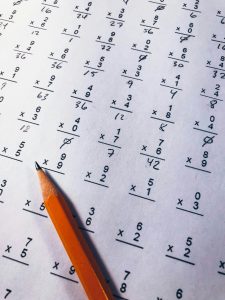How to Select Age-Appropriate Math Puzzles for Your Child

Math puzzles for kids have become increasingly popular as parents and educators recognize the benefits of incorporating puzzle-solving into their learning journey. Not only do these puzzles make math engaging and enjoyable, but they also develop critical thinking, problem-solving, and logical reasoning skills. However, with so many options available, it can be overwhelming to know where to start. In this guide, we will walk you through the process of selecting age-appropriate math puzzles that cater to your child’s developmental stage and help them build a strong foundation in mathematics. Let’s dive in!
Age-Appropriate Math Puzzles for Early Elementary (Ages 5-7)
Math puzzles for kids in the early elementary years should focus on simple patterns, counting, basic addition/subtraction, and visual puzzles. These puzzles help children develop their number sense and improve their understanding of foundational concepts. Here are some examples of age-appropriate math puzzles for this age group:
Counting Triangles: Challenge your child to count the number of triangles in a given shape or picture.
Simple Picture Puzzles: Present your child with pictures where they have to identify missing elements or complete a pattern.
Matching Games: Encourage your child to match objects or shapes based on color, size, or other attributes.
Basic Riddles: Introduce riddles that involve simple addition/subtraction or number relationships.
Remember, the key is to make these puzzles engaging and enjoyable for your child. Incorporate colorful visuals, relatable themes, and age-appropriate stories to keep their interest piqued.
Age-Appropriate Math Puzzles for Upper Elementary (Ages 8-10)
As children progress into the upper elementary years, their math skills become more advanced, and they are ready for more complex challenges. Math puzzles for kids in this age group should focus on introducing more complex number patterns, multiplication/division, and logic puzzles. Here are some examples:
Magic Squares: Challenge your child to fill in a grid of numbers so that the sum of each row, column, and diagonal is the same.
Finding Number Sequences: Present your child with a sequence of numbers and ask them to identify the missing number or continue the pattern.
Basic Sudoku: Introduce your child to the popular number puzzle game Sudoku, starting with smaller grids and gradually increasing the difficulty.
Multiplication Riddles: Engage your child’s problem-solving skills by presenting them with riddles that involve multiplication or division.
Age-Appropriate Math Puzzles for Middle School (Ages 11-13)
In middle school, math puzzles for kids should challenge their critical thinking abilities and introduce more advanced concepts. These puzzles can involve fractions, decimals, pre-algebra, and multi-step logic problems. Here are some examples:
Advanced Sudoku: Increase the complexity of Sudoku puzzles by using larger grids or introducing additional constraints.
Magic Squares with Larger Grids: Present your child with more challenging magic squares that require higher-level thinking to solve.
Number Pattern Analysis: Encourage your child to identify and analyze complex number patterns, such as Fibonacci sequences or geometric progressions.
Math Crossword Puzzles: Combine math and language skills by introducing crossword puzzles that require solving math-related clues.
Remember, as your child progresses, it’s essential to adjust the difficulty level of the puzzles and provide opportunities for them to explain their thinking and try different strategies. This helps assess their readiness for more challenging puzzles and fosters their problem-solving skills.
Tips for Selecting Engaging Math Puzzles
Now that you have a better understanding of age-appropriate math puzzles for kids, let’s explore some tips to make the selection process easier:
Consider your child’s interests: Choose puzzles that align with your child’s hobbies or passions. For example, if they love animals, select puzzles with animal-themed visuals or stories.
Rotate puzzle types: Introduce a variety of puzzle types to keep the learning experience fresh and stimulating. Alternate between riddles, patterns, crosswords, logic games, and more.
Start with easier puzzles: Begin with puzzles that match your child’s current skill level and gradually increase the difficulty as they gain confidence and skills.
Use trusted resources: Explore grade-level puzzle collections from reputable educational websites such as Cuemath, DreamBox, and Mashup Math. These platforms organize puzzles by age and topic, making it easier for you to find suitable options.
By following these tips, you can ensure that your child remains engaged, motivated, and challenged while developing their mathematical abilities through fun puzzle-solving activities.
Table: How to Select Age-Appropriate Math Puzzles for Your Child
|
Age Range |
Recommended Puzzle Types |
Typical Number of Pieces/Complexity |
Key Skills Developed |
Example Puzzle Ideas |
|---|---|---|---|---|
|
0–12 months |
Soft, cloth, or fabric puzzles |
Less than 12 pieces |
Fine motor skills, sensory exploration |
Large fabric shape puzzles |
|
1–2 years |
Peg, knob, or wooden puzzles |
Less than 12 pieces |
Hand-eye coordination, shape recognition |
Simple animal or shape puzzles |
|
2–3 years |
Wooden or floor puzzles |
12–20+ pieces |
Problem-solving, spatial awareness |
Basic jigsaw puzzles |
|
3–4 years |
Alphabet and number puzzles |
12–20+ pieces |
Early literacy and numeracy |
Letter or number matching puzzles |
|
4–5 years |
3D and building puzzles |
30–60+ pieces |
Creativity, logical thinking |
Block-building, simple 3D puzzles |
|
5–6 years |
Geography and map puzzles |
100+ pieces |
World awareness, advanced matching |
Map or landmark puzzles |
|
6–8 years |
Science and nature puzzles |
100+ pieces |
Science concepts, critical thinking |
Life cycle, animal habitat puzzles |
|
8–12 years |
Riddles, advanced logic, and math puzzles |
100+ pieces / complex logic |
Reasoning, algebraic thinking, deduction |
Magic squares, sequence puzzles |
Tips:
-
Gradually increase puzzle complexity as your child grows and gains confidence.
-
Choose themes that match your child’s interests to boost motivation and engagement.
-
Always ensure puzzles are safe and made from non-toxic materials, especially for younger children.
-
Rotate puzzle types to expose your child to a variety of skills and subjects.
Summing Up:
Math puzzles for kids are powerful learning tools that foster a love for math while enhancing critical thinking skills. By selecting age-appropriate math puzzles based on your child’s developmental stage and skill level, you can support their cognitive development and build a strong foundation in mathematics. Remember to consider your child’s age, rotate puzzle types, adjust difficulty levels, and use trusted resources to provide them with engaging and challenging puzzles. With the right puzzles, your child can embark on an exciting journey of mathematical exploration and discovery.
At SIP Abacus India, we offer world-class skill development programs that aim to unlock the mental potential of children through fun learning methodologies. Our programs focus on developing skills in mathematics and overall development. We use the Abacus tool and visualization techniques to teach children mental math skills from ages 6-12.
Our curriculum is divided into Junior, Foundation, Advanced, and Grand Master modules with structured levels and a proven track record. Classes are small, with 6-8 students, and are held offline. We incorporate interactive software, lesson plans, and materials designed to engage children in fun learning activities.
Studies show that children who complete the SIP Abacus program perform significantly better in math and reading at school, often 3-4 years ahead of their peers within 2 years of joining. The program’s unique approach of developing both sides of the brain has proven effective in nurturing children’s academic and overall growth.
So why wait? Start your child’s math puzzle-solving adventure with SIP Abacus today!



